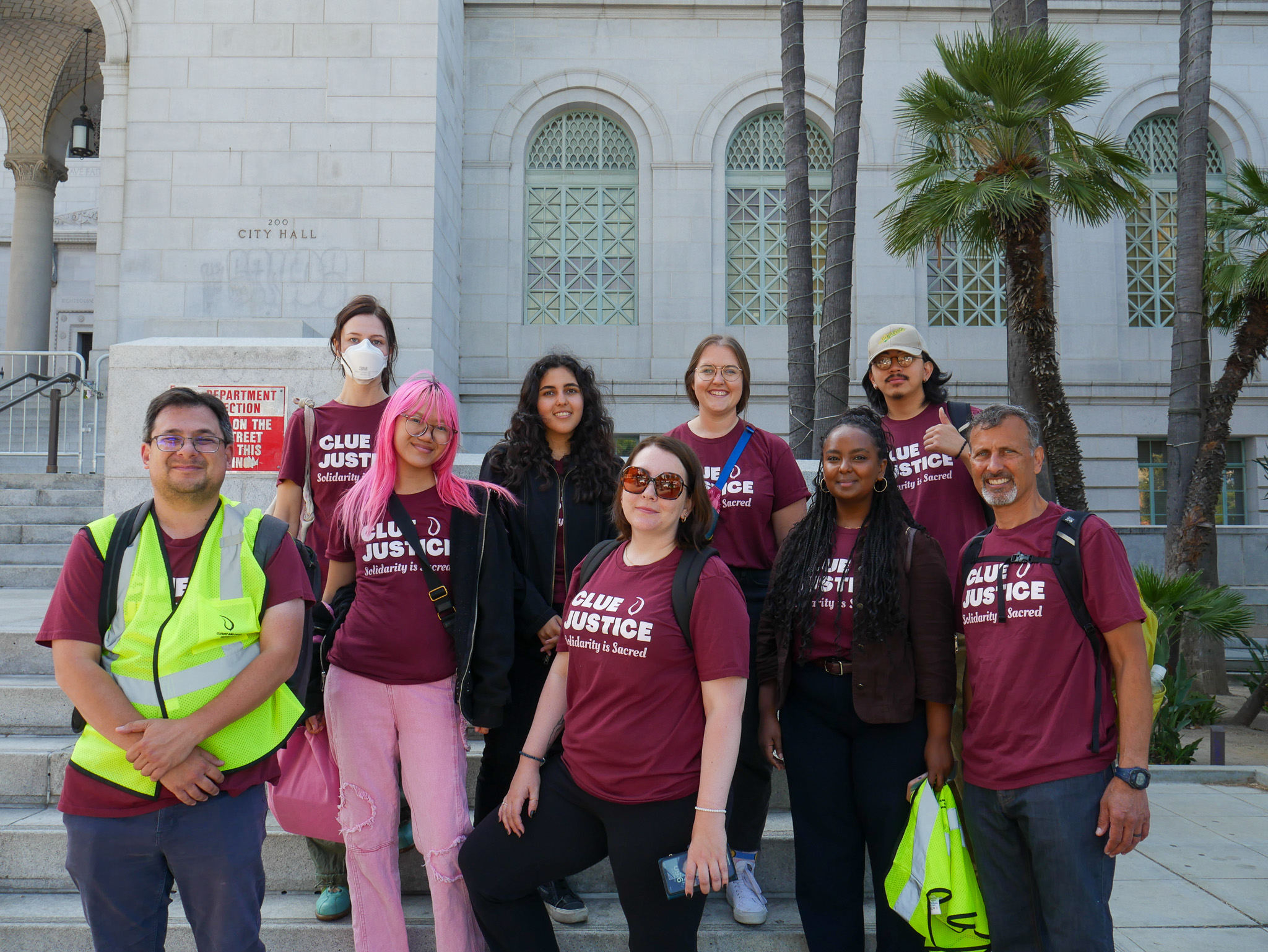By Bailey Payne, 2025 Young Religious Leadership Fellow
I’m a seminary student in LA in 2025. I feel like a rare breed. As religious affiliation has been on the decline in America, so has seminary enrollment. Coming from the Protestant tradition, my coming-of-age questions have been along the lines of, “How do you lead a church when fewer and fewer people want a church? What’s the point of becoming a pastor if no one is interested in being pastored? Can pastoring contribute to the common good?”
Through CLUE’s Young Religious Leadership Fellows program this summer, I observed instances where clergy and laity were valued and fulfilled unique roles in the public sphere. I saw this on our first day of the program when, in response to weekend ICE raids, our orientation schedule was changed on the fly so we could go to Grand Park for the first large ICE protest of the summer. The protest was calling for the release of David Huerta, president of the Service Employees International Union-United Service Workers West (SEIU-USWW), who was arrested for protesting an ICE raid a couple of days earlier.
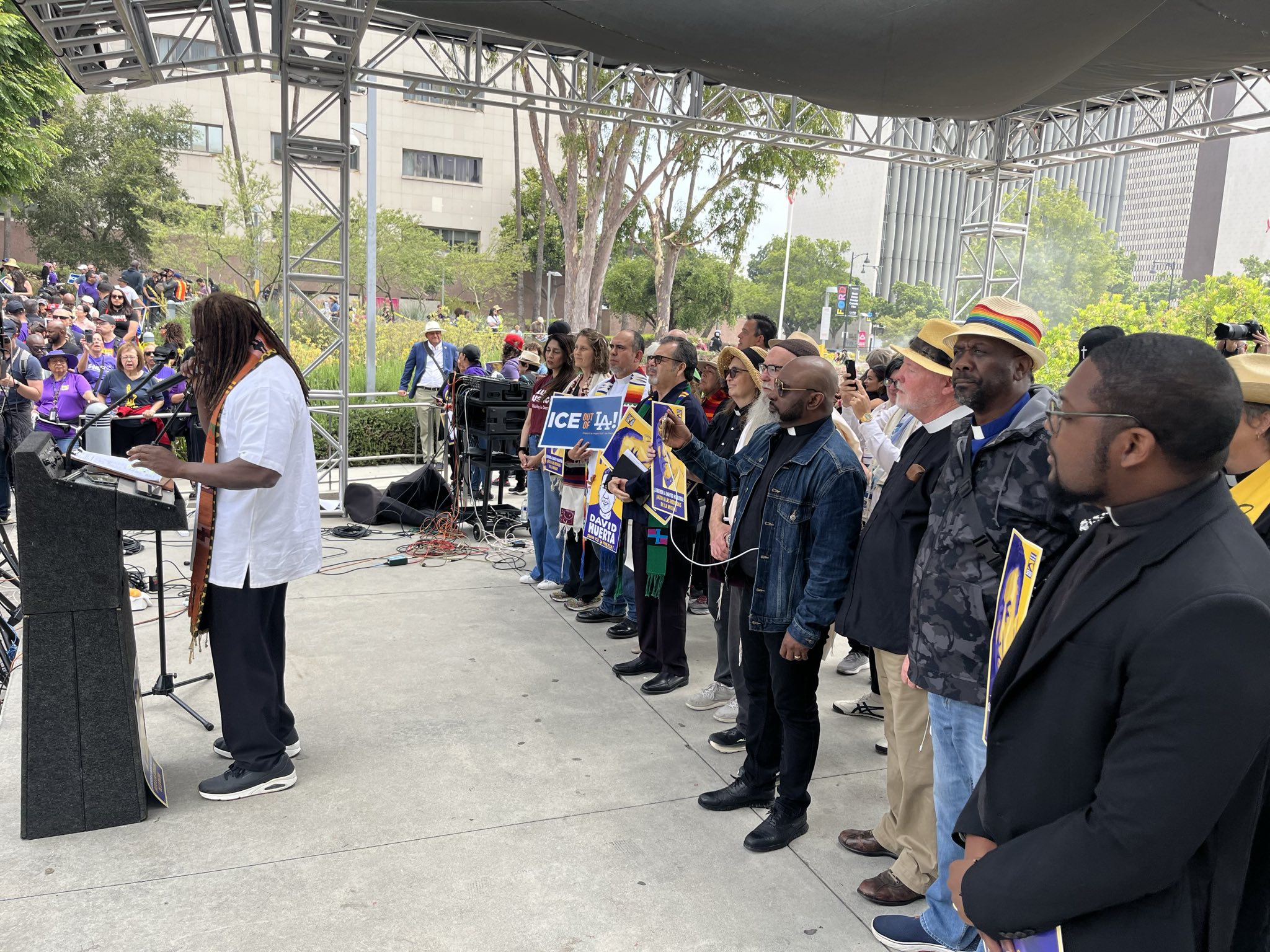
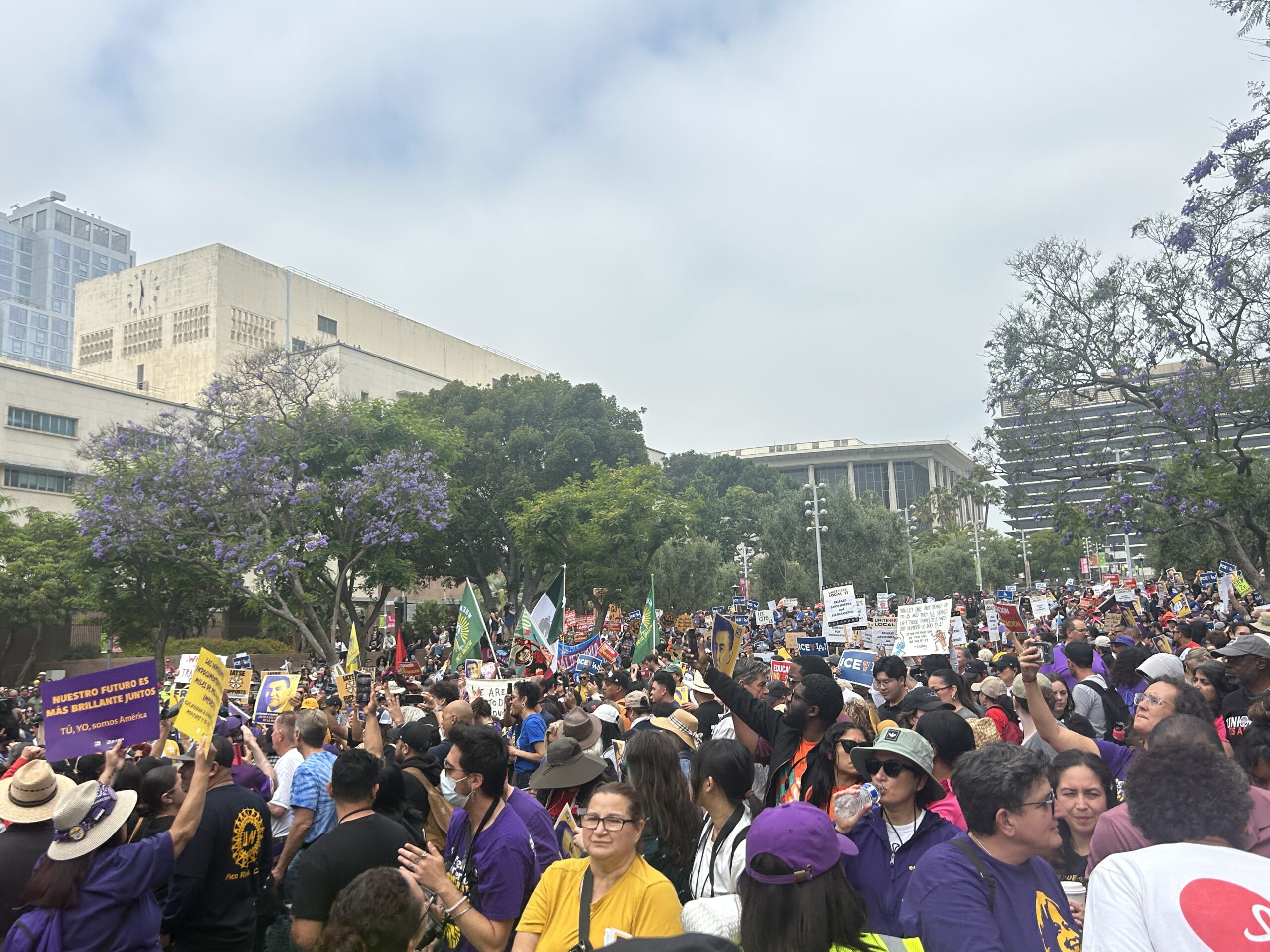
CLUE recruited about forty clergy and laity members to stand on stage and had a few share blessings and prayers amidst a line-up of other union organizers and community leaders. After the clergy and laity were done, they gathered together on the side of the stage to decide if they would do anything while they were gathered in downtown LA. I got to witness clergy discerning their unique role in the public sphere.
Should they go to the courthouse where Huerta’s hearing was happening? Should they stay at this rally and be available to de-escalate if the need arises? Should they march down and deliver a delegation to the National Guard and the LAPD?
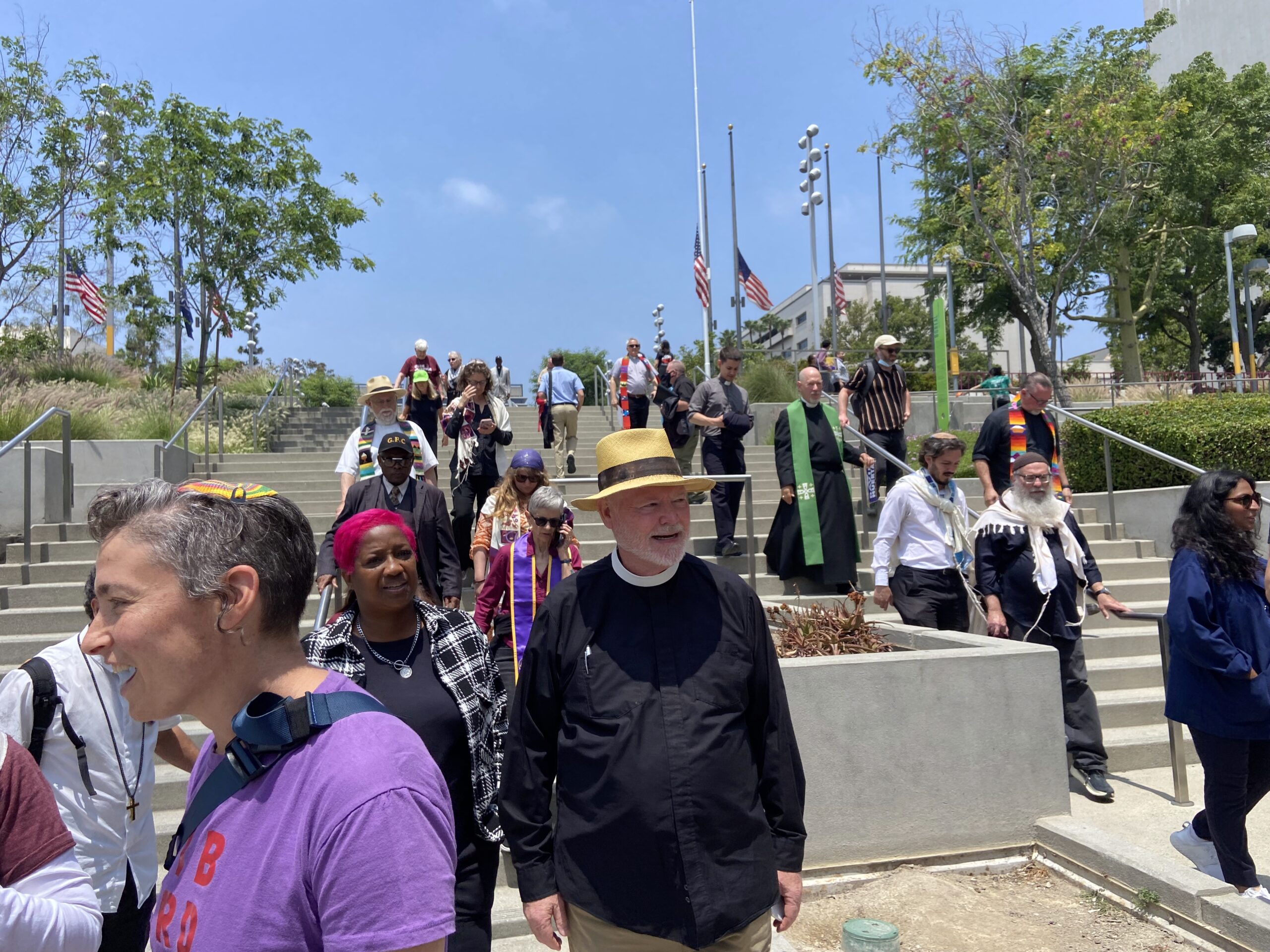
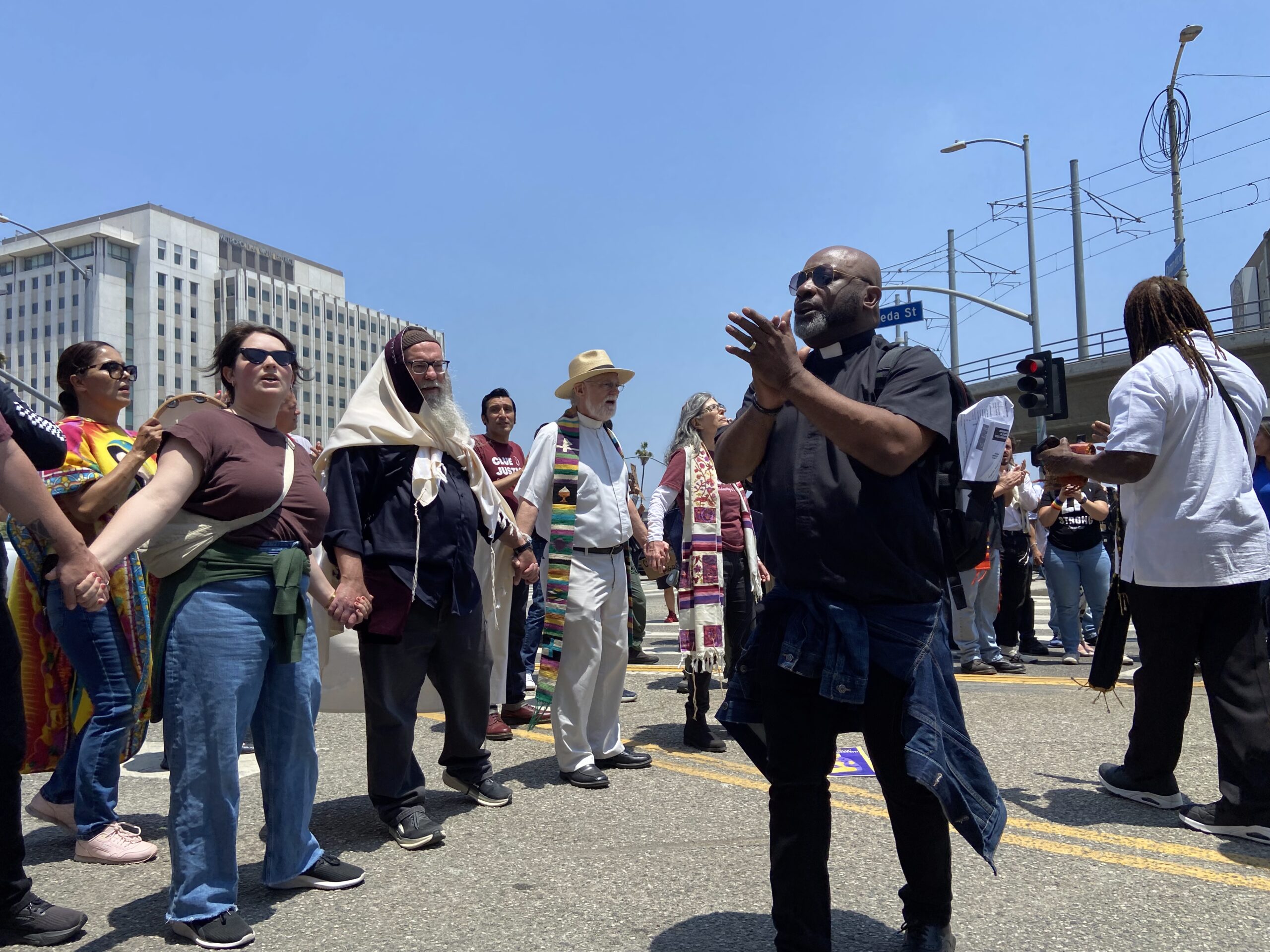
It ended up being a little bit of everything. A small group of clergy would go to the courthouse later for the hearing. Others decided to march from Grand Park down to the Metropolitan Detention Center to bring a delegation to face the LAPD and the National Guard. Those who weren’t up for joining the delegation stayed back at the rally as a way to continue to show support from the faith community.
All of these roles were vital. All of these roles came from people of faith, clergy and laity alike, knowing who they are and what they have to offer the public. People of faith in public spaces bring words of blessings, a presence of safety, and a moral authority.
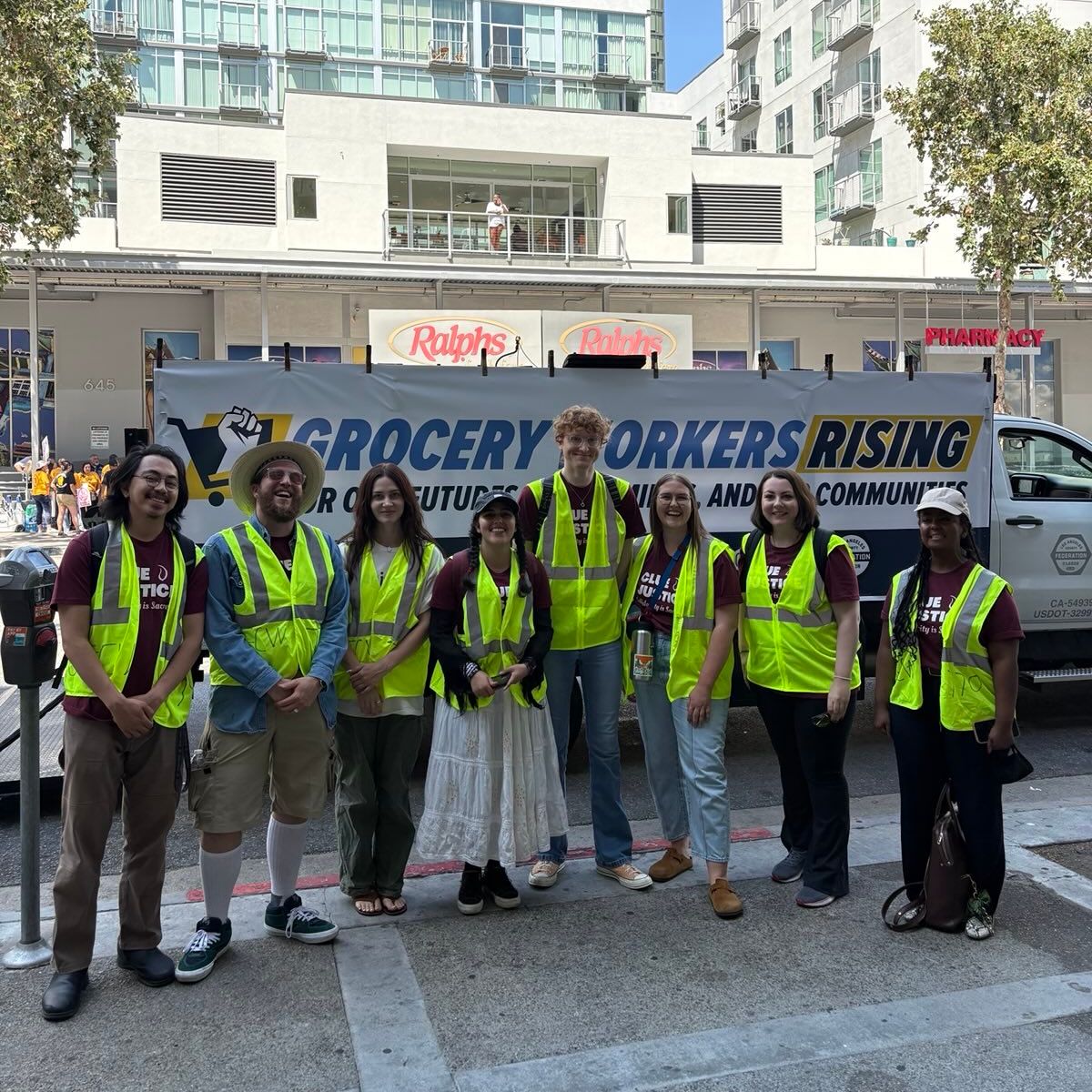
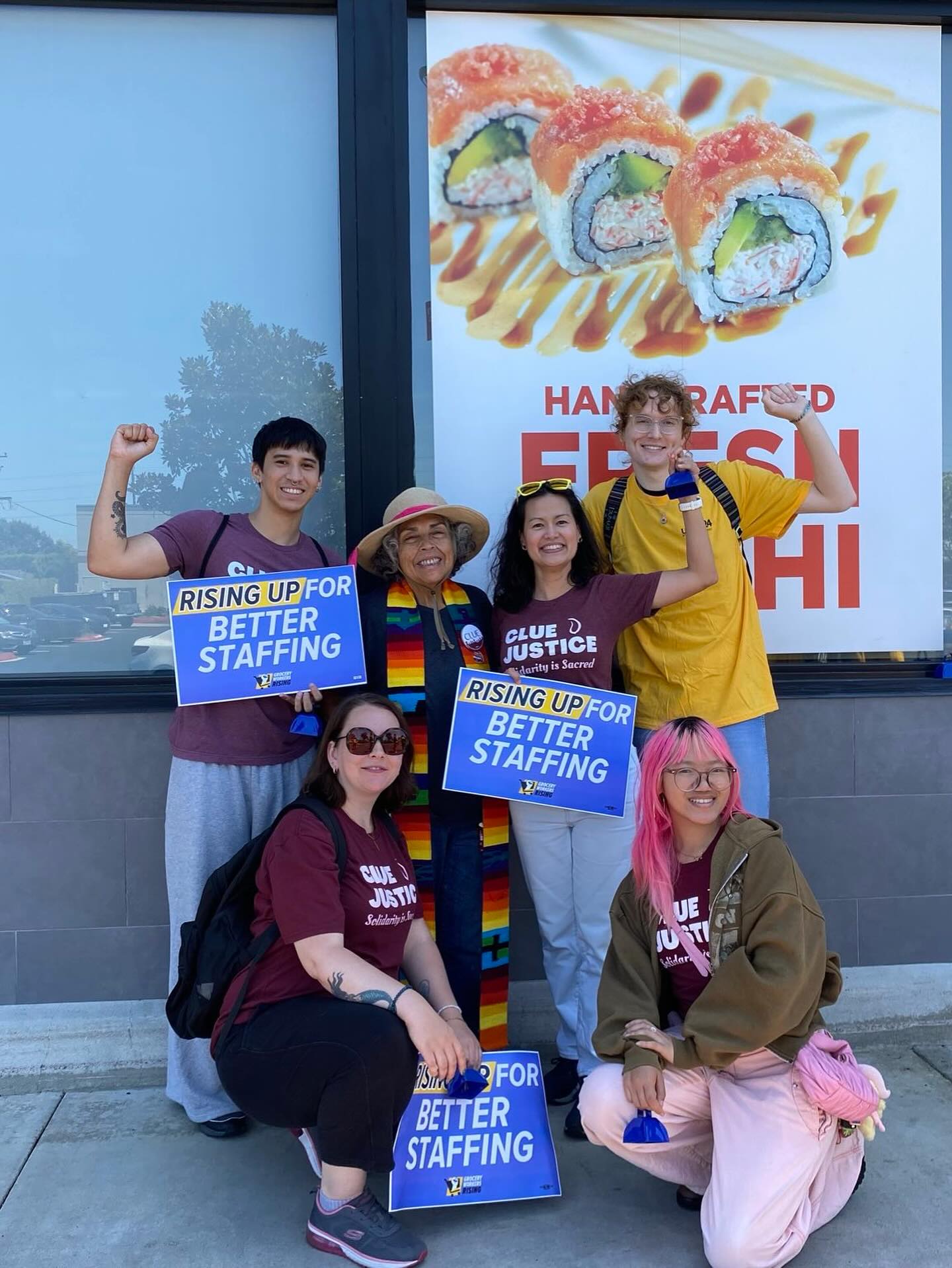
The role of clergy and laity in organizing spaces is not just limited to joining protest events. It also involves showing up to care for organizers and workers. I witnessed Rev. Jennifer, CLUE’s executive director, do this at a large non-violent training workshop this summer.
CLUE partnered with the Los Angeles Federation of Labor and the UCLA Labor Center for a mass Nonviolent Direct Action Training attended by 1,400 people. Amidst many speakers from other organizations who shared testimonies of resistance and calls to action, Rev. Jennifer used her allotted speaking time to see the audience and name all that they were holding. I could feel in myself and in the room a sense of being held, a palpable reprieve. As I scanned the room, I saw tears rolling down cheeks. This is holy work: to see people, bear witness to their pain, and tell them that they matter. This is sacred solidarity.
I learned from my summer with CLUE that the role of the faith community in the movement is still valued and wanted. The clergy’s role is not to fix everything. It is to stand in solidarity with the vulnerable in our communities by offering blessing, presence, and witness, and lending moral authority when it is asked for.
